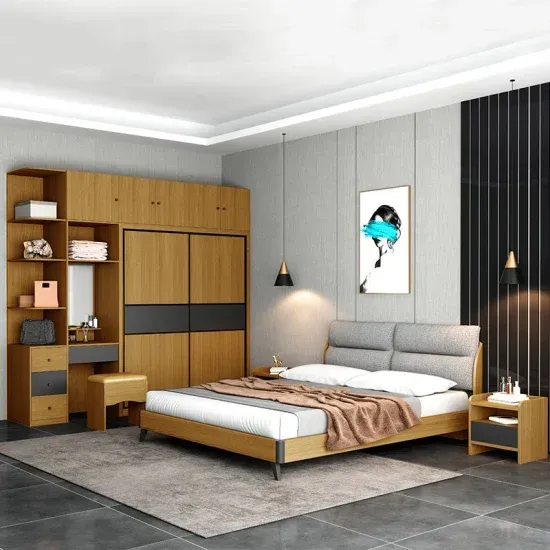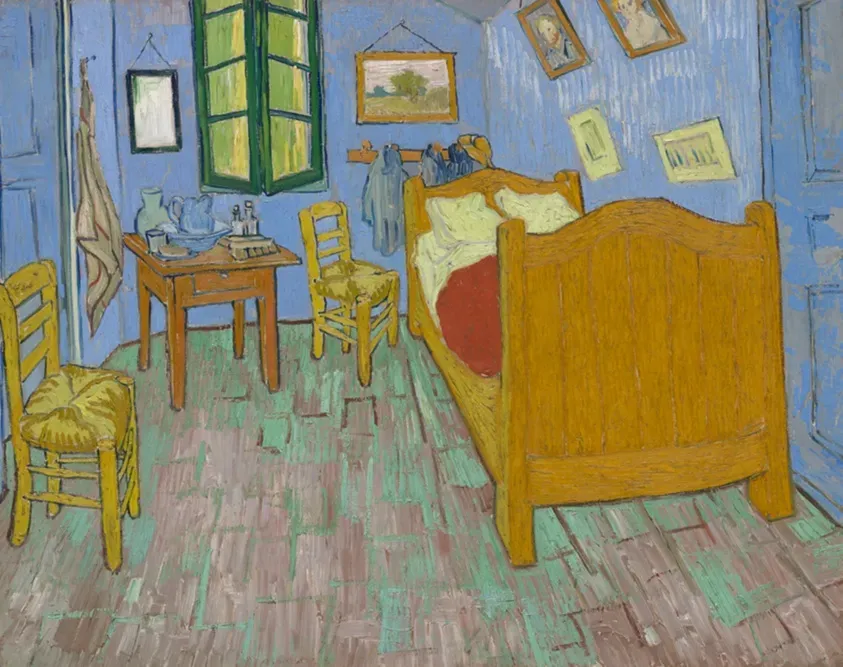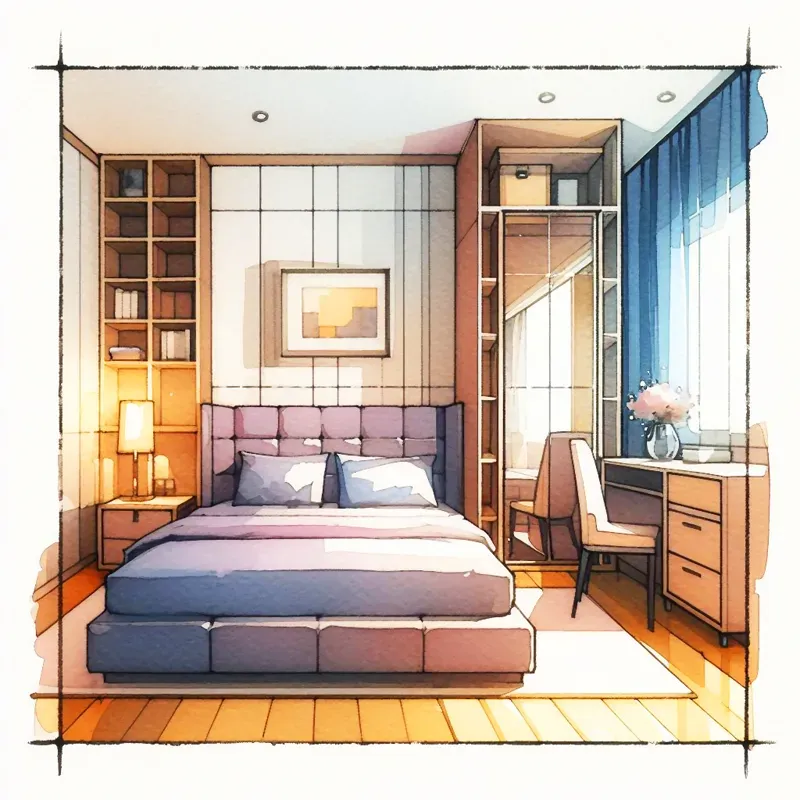Table of Contents
Let's be honest. Your bedroom shouldn't just be where laundry piles up and you crash at the end of a long day. It should be your personal sanctuary, a place designed for rest and recharge. But getting there isn't just about picking out a fluffy duvet. It hinges on thoughtful bedroom furniture design. Get it right, and you create a calming retreat. Get it wrong, and you're just shuffling around bulky objects in a box. This article isn't about aspirational photos you'll never replicate; it's about practical steps to make your space work for you. We’ll walk through selecting the right pieces, figuring out where to put them so you can actually walk around, and sidestepping the common pitfalls that turn a potential haven into a cluttered mess. Ready to stop tripping over that nightstand and start sleeping better?
Getting Started: Why Bedroom Furniture Design Matters
Getting Started: Why Bedroom Furniture Design Matters
Alright, let's talk about why bothering with bedroom furniture design isn't just for folks on HGTV. Your bedroom is arguably the most personal space in your home. It’s where you start and end your day. If it feels cramped, chaotic, or just plain uncomfortable, that bleeds into everything else. Think about it: stumbling over a misplaced dresser in the dark, or feeling like the walls are closing in because you crammed too much stuff in there. Good bedroom furniture design isn't about making it look pretty for Instagram; it's about creating a functional, calming environment that actually helps you unwind. It affects your sleep quality, your mood, and frankly, your sanity.
Choosing the Right Pieces for Your Bedroom Furniture Design
Choosing the Right Pieces for Your Bedroom Furniture Design
Start with the Non-Negotiables
let's get down to brass tacks when it comes to choosing the right pieces for your bedroom furniture design. Forget the fancy stuff for a minute. What do you absolutely *need*? A bed, obviously. Don't skimp here; your back will thank you later. A mattress is a whole other can of worms, but the bed frame sets the tone. Do you want something low-profile and sleek, or a grand four-poster? Then comes storage. Unless you're a minimalist monk, you'll need somewhere for clothes. A dresser is standard, maybe a chest of drawers if you have the space. Nightstands? Essential for lamps, books, and that ever-present glass of water. Think about function first, then worry about matching finishes.
Size Up Your Space Realistically
Before you fall in love with that massive armoire, measure your room. Seriously. Get a tape measure and figure out the dimensions. This isn't just about whether a piece *fits* through the door, but whether it fits comfortably in the room without making it feel like a furniture storage unit. Scale is critical in bedroom furniture design. A huge bed in a tiny room looks ridiculous and eats up all your floor space. Likewise, dinky nightstands next to a king-size bed look lost. Draw a simple floor plan on paper, or use an online tool. Map out where the windows and doors are. See how things fit before you buy.
- Measure your room dimensions (length, width, height).
- Note window and door locations and sizes.
- Account for walkways – you need space to move around the bed and open drawers.
- Consider furniture height relative to windows and wall space.
- Don't forget closet doors or built-in features.
Think About How You Actually Live
Choosing the right pieces for your bedroom furniture design isn't just about filling space; it's about supporting your habits. Do you read in bed? You'll need a good reading lamp and maybe a comfortable headboard to lean against. Do you need a spot to sit and put on shoes? A bench at the foot of the bed or a small accent chair could be useful. Is clutter your nemesis? Look for pieces with ample hidden storage – drawers in the bed base, nightstands with deep drawers, or a dresser with lots of compartments. Don't just buy furniture; buy solutions that make your daily routine smoother.
Layout Logic: Making Your Bedroom Furniture Design Work
Layout Logic: Making Your Bedroom Furniture Design Work
Anchoring the Room: Where the Bed Belongs
Alright, you've got your pieces. Now for the fun part: making them fit without looking like a furniture store exploded. The absolute cornerstone of any bedroom furniture design layout is the bed. Seriously, everything else revolves around this big, rectangular sleep magnet. The general rule? Put the head of the bed against the longest wall, ideally the one you see when you first walk in. Avoid putting it directly under a window (drafty, and weird for curtains) or right in front of the door (bad feng shui, and just awkward). You want it to feel like a solid anchor, not an obstacle course centerpiece.
Circulation and Function: Placing the Rest
Once the bed is locked in, you work outwards. Nightstands go next to the bed, obviously. Make sure they're roughly the same height as your mattress top for easy reach. Dressers and chests? Find walls that can accommodate their width and depth without blocking walkways or doors. You need enough space *in front* of drawers to actually open them and stand there without bumping into something. Think about the path you take from the door to the bed, from the bed to the closet, and from the closet to the dresser. Keep those paths clear. A good bedroom furniture design considers how you move through the space.
- Allow at least 2-3 feet of clearance around the bed, especially between the bed and walls or other furniture.
- Ensure dresser drawers can open fully without hitting the bed or other items.
- Keep pathways to closets and doors unobstructed.
- Place nightstands within easy reach of the bed.
- Consider the swing of doors (closet and entry) when placing furniture on adjacent walls.
Dealing with Windows, Doors, and Other Headaches
Not every room is a perfect box, which is where bedroom furniture design gets interesting. Windows and doors dictate a lot. Don't block windows you need for light or ventilation. Avoid placing tall dressers or wardrobes right next to the entry door; it makes the room feel smaller and can be jarring. If you have oddly placed radiators or built-in features, you have to work around them. Sometimes, this means getting creative with smaller pieces or even considering custom-built storage. It's a puzzle, and sometimes you have to try a few arrangements before it clicks. Remember, the goal is functional flow, not just fitting everything in.
Finishing Touches and Avoiding Common Bedroom Furniture Design Blunders
Finishing Touches and Avoiding Common Bedroom Furniture Design Blunders
Layering Light and Textiles: The Comfort Factor
you've got the big stuff placed. Bed's anchored, dresser fits, you can actually open your drawers. Now for the layers that turn a room with furniture into a place you actually *want* to spend time in. Think beyond the harsh overhead light. Good bedroom furniture design considers how light affects the mood. You need task lighting by the bed for reading (those nightstands are useful!). Maybe an accent lamp in a corner. Dimmer switches are your friend. Then there are textiles – rugs, curtains, throw pillows, blankets. These add texture, color, and a crucial layer of comfort. A rug can define the bed area; curtains soften the light and add privacy. Don't underestimate the power of soft things.
It’s easy to just grab whatever's on sale, but mismatched lighting temperatures or scratchy fabrics can ruin the vibe you're trying to create. Consider materials that feel good against your skin and colors that promote calm. Blues, greens, and muted tones tend to work well, but if deep jewel tones make you feel luxurious and relaxed, go for it. This is where the personality comes in. It's the difference between a hotel room and your own space. It’s not just about filling the void; it’s about creating a feeling.
- Use multiple light sources: overhead, bedside, accent.
- Consider warmer light temperatures (around 2700K) for a cozy feel.
- Layer rugs to add softness and define zones.
- Choose curtains that control light effectively (blackout if needed).
- Incorporate varying textures through pillows, throws, and bedding.
Scale and Proportion: The Awkward Fit
One of the biggest blunders in bedroom furniture design is ignoring scale and proportion. We touched on this earlier with measuring, but it's worth repeating because it's where rooms often go wrong. A gigantic headboard in a room with low ceilings looks like a mushroom cloud. A tiny little accent chair next to a hefty dresser looks ridiculous. Every piece should feel like it belongs, not like it wandered in from another house. This goes for decorative items too. A single, dinky picture frame on a vast wall looks sad. A massive piece of art on a small wall feels overwhelming.
Think about the visual weight of objects. A dark, solid dresser has more visual weight than a light, open bed frame. Balance is key. If you have a large, imposing piece on one side of the room, balance it with something substantial, though not necessarily as large, on the other side. It’s like composing a picture. Your bedroom furniture design should feel balanced and harmonious, not like a collection of random objects plonked down wherever they fit.
Ignoring Flow and Storage Needs: The Clutter Trap
Finally, let's talk about the practical pitfalls. Ignoring the flow of the room is a classic. You need to be able to navigate from the door to the closet, to the bed, to the bathroom (if en-suite) without doing the furniture shuffle. Blocking pathways or placing furniture too close together makes the room feel cramped and dysfunctional. Another major blunder? Underestimating your storage needs. We all have stuff. If your bedroom furniture design doesn't account for where that stuff goes, it ends up on every available surface, turning your sanctuary into a storage locker.
Before you finalize your layout and pieces, do a realistic audit of your belongings. How many clothes do you have? Shoes? Books? Where will your dirty laundry go? Where will you put that stack of magazines? Planning for storage from the outset, whether through dressers, under-bed storage, or thoughtful closet organization, is crucial. Don't just buy pretty things; buy functional solutions. A beautiful room you can't comfortably live in isn't a successful bedroom furniture design.
Designing for Sleep and Sanity
So, you've navigated the world of bedroom furniture design. You've picked pieces that fit, arranged them so you don't stub your toe at 3 AM, and hopefully avoided the urge to cram in that oversized armchair you saw online. Remember, this isn't about achieving magazine perfection, it's about creating a room that actually helps you rest. A well-designed bedroom isn't just furniture and paint; it's a deliberate act of making space for quiet. It might take some tweaking, maybe even admitting that trendy piece just doesn't work. But getting your bedroom furniture design right pays off when you finally feel like you can exhale the moment you walk in.
